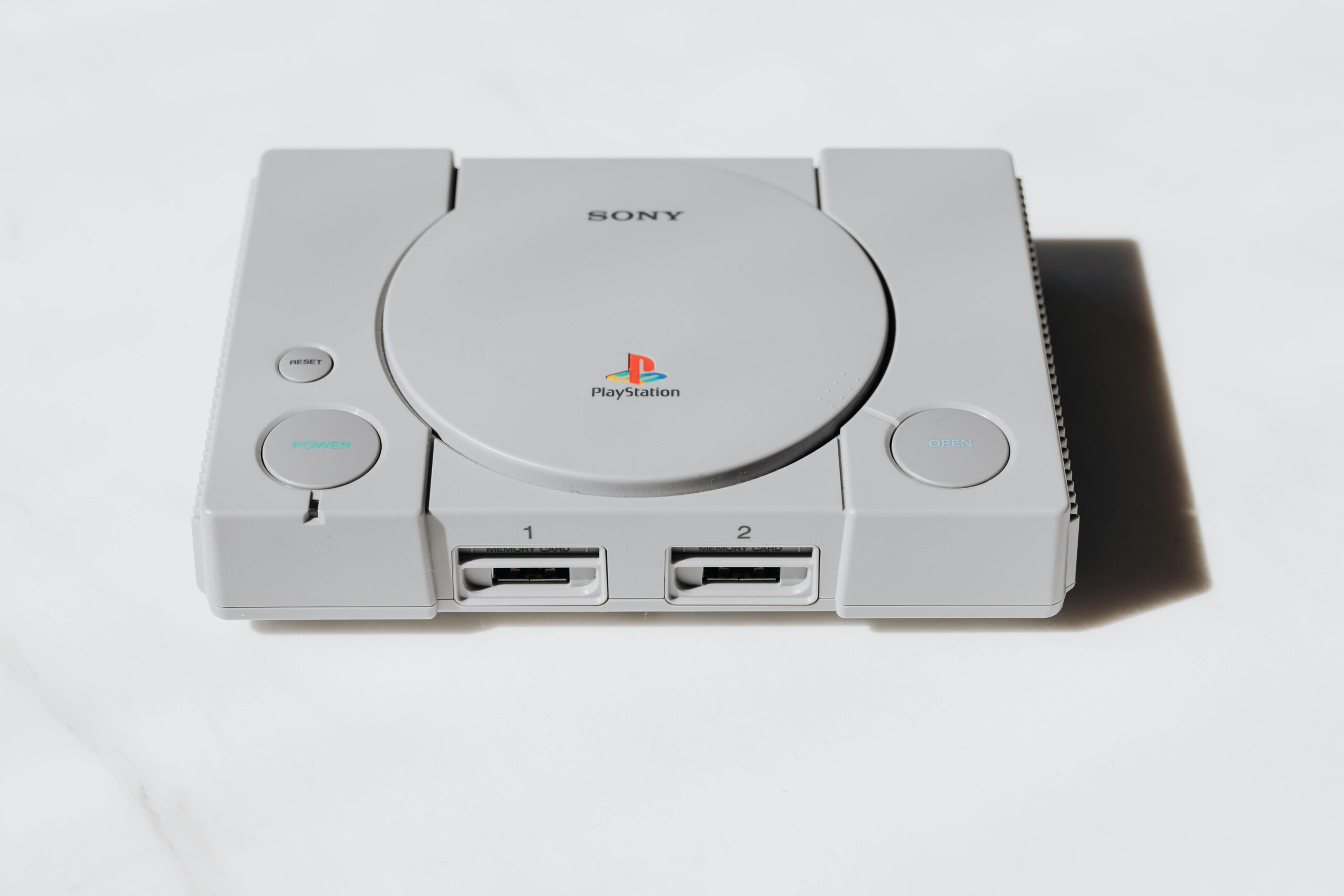The PlayStation 1 (PS1) wasn’t just another gaming console—it was a revolution. Launched in Japan in 1994 and worldwide in 1995, Sony’s first gaming system changed the industry forever, selling over 100 million units. With legendary titles, a sleek design, and groundbreaking hardware, the PS1 remains one of the most beloved consoles of all time. Let’s take a deep dive into its specs, memory card system, controllers, and lasting legacy.
Powering the Revolution: PlayStation 1 Hardware Specs
At the time, the PlayStation 1 was a powerhouse compared to its rivals. Here’s a breakdown of what made it tick:
- CPU: 32-bit RISC MIPS R3000A, clocked at 33.8688 MHz
- GPU: Custom Sony GPU, capable of rendering 360,000 polygons per second
- Memory:
- RAM: 2 MB
- VRAM (Video Memory): 1 MB
- Sound Buffer: 512 KB
- Storage: CD-ROM drive (2x speed reader)
- Resolution: Up to 640 × 480 pixels
- Color Palette: 16.7 million colors, with 24-bit color depth
- Audio: 24-channel ADPCM sound processor
These specs allowed for immersive 3D environments, realistic textures, and high-quality sound—things that were rare at the time.
The PlayStation 1 Memory Card: A Must-Have Accessory
Unlike cartridge-based consoles that saved progress internally, the PS1 relied on external memory cards. If you grew up with the console, you probably remember the struggle of running out of save slots!
- Capacity: 128 KB (1 Megabit), divided into 15 blocks
- File System: Proprietary Sony format
- Port: Inserted into the PlayStation controller slot
Since some games took multiple blocks to save, players often had to juggle multiple memory cards. Accidentally deleting saves? A nightmare.
The Controllers: From Classic to DualShock Innovation
Original PlayStation Controller
The first PS1 controller was simple yet effective:
- Four action buttons: Triangle, Circle, Cross (X), and Square
- Four shoulder buttons: L1, L2, R1, R2
- D-pad and Start/Select buttons
The Game-Changer: DualShock Controller
In 1997, Sony released the DualShock controller, which became the industry standard.
- Dual analog sticks for smoother movement
- Rumble feature (vibration feedback) for immersion
- Improved ergonomic design
This controller laid the foundation for all future PlayStation controllers.
CD-ROM Gaming: A Game-Changer
The PS1 ditched cartridges in favor of CDs, allowing for:
- Bigger storage (700 MB per disc)
- Full-motion video (FMV) cutscenes
- CD-quality soundtracks
While CDs meant longer load times and scratch risks, they also enabled more ambitious games and stunning cinematics.
Graphics & Performance: How the PS1 Pushed Limits
The PlayStation 1 ushered in the 3D era with groundbreaking graphical capabilities:
- Texture-mapped polygons replacing flat 2D sprites
- Real-time lighting and shading
- Frame rates averaging 30 FPS
Games like Final Fantasy VII, Metal Gear Solid, and Resident Evil showcased what was possible.
Why the PS1 Still Matters Today
Despite being over 30 years old, the PS1 still holds a special place in gaming history. Here’s why:
- Massive Game Library: Over 7,900 games were released for the PS1.
- Nostalgia Factor: Many players still revisit their favorite childhood titles.
- Collectibility: Original consoles and games have become valuable collector’s items.
- Homebrew & Modding Scene: The PS1 remains popular among retro gaming enthusiasts and modders.
- Emulation & Digital Re-Releases: Many PS1 classics are available via PlayStation Store and emulators.
Final Thoughts: A Console That Defined a Generation
The PlayStation 1 wasn’t just a gaming system—it was a cultural phenomenon. Its hardware, memory card system, and innovative controllers set the stage for the future of gaming. Whether you’re a retro-gaming fan or just curious about gaming history, the PS1’s impact is undeniable.
Still got your PS1? Dust it off, and relive the magic.
Photo by Kaboompics.com

















































































